Vast multi-arts complex at Royal Arsenal Riverside has venues for performance, rehearsals + recording
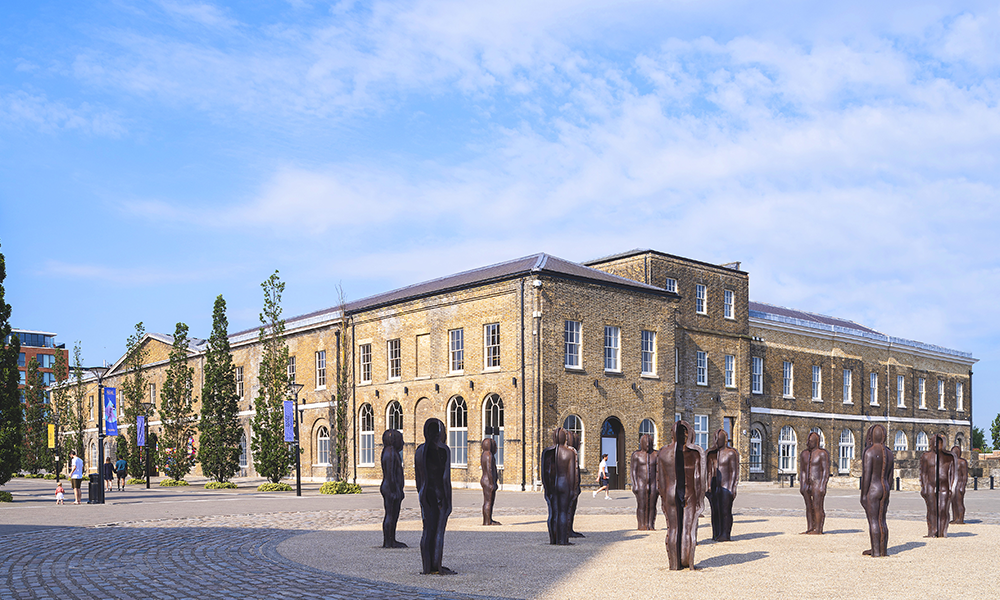
Subscribe to Wharf Life’s weekly newsletter here
“Activity” is the word buzzing around the lips of James Heaton as we sit in Beanfeast – one of the magnificent exposed brick spaces that form part of the vast Woolwich Works complex.
For the CEO of the Woolwich Creative District Trust – set up to independently operate the site on a not-for-profit basis – it’s a welcome change, given the challenging stop-start conditions of two years of pandemic restrictions.
Now though, even largely empty on a sunny Wednesday morning in April, there’s a life about the place – the vibration of possibility in its walls.
That’s something James and his team intend to nurture and feed as the months roll by until its performance spaces, rehearsal studios, recording facilities, cafe, bar and offices are all humming with the industry and pulse of cultural creation.
what is Woolwich Works?
James confessed at the start of our interview that, despite having been in post for nearly three years, he’s yet to find a rapid way of answering this question – testament, perhaps to the sheer scale of the project he’s steering.
“Woolwich Works is physically five buildings on the Royal Arsenal Riverside development in south-east London,” he said.
“They’re all former military buildings and are Grade II or Grade II* listed. The site overall is about 20 years into its redevelopment by Berkeley Homes.
“With Woolwich Works, Greenwich Council wanted to achieve a number of things.
“Fundamentally the beginning of this project was looking at these historic buildings and their situation and taking the view that it was important to preserve these spaces in public use for the benefit of everyone in the borough and beyond.
“A decision was made to develop the focus of these buildings as being around an arts and culture offer. Ultimately that’s how we’ve got to where we are.
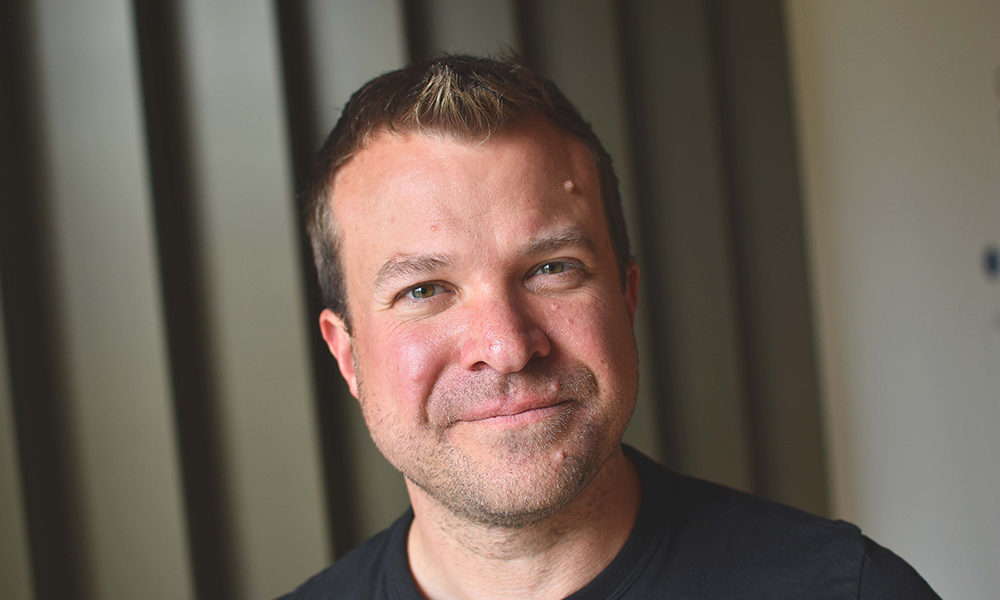
“Three of the buildings, all joined together – The Cartridge Factory, The Laboratory and The Carriage Works – are home to phenomenal immersive theatre company Punchdrunk, which has just launched its first show at the site and is also resident at Woolwich Works.
“The spaces have been joined together and audiences walk into a whole world and navigate themselves around it.
“Then, on the other side of No. 1 Street, there’s our main building, which has four wings around a central courtyard. That houses a number of venues, rehearsal studios, a recording studio and offices. We also have space in The Academy building next door.”
In addition to Punchdrunk, Woolwich Works is also home to the National Youth Jazz Orchestra (NYJO), the Woolwich Contemporary Print Fair, Protein Dance and Chineke!, an orchestra of predominantly black and ethnically diverse classical musicians.
Alongside the cafe, performances typically take place in either the 1,504sq m of the Fireworks Factory – a flexible auditorium that can be set up in any number of configurations – or Beanfeast, a smaller, narrower venue on the first floor with views over the Thames.
what’s the intention?
“Woolwich Works is a multi-arts venue with lots of different spaces so we can present a varied performance programme,” said James.
“We have the resident companies and they will contribute to that as well as running various creative and community initiatives that offer opportunities to people living locally.
“These might be in schools or, for example, in our recording studio which will be the last thing to open here.
“We have world-class facilities and resident companies, but we’re also community focused, so if you’re someone who lives nearby and who wants to dip their toe into music, film or design, then we’ll facilitate that with formal training alongside mentoring, coaching and the chance to work with professionals.
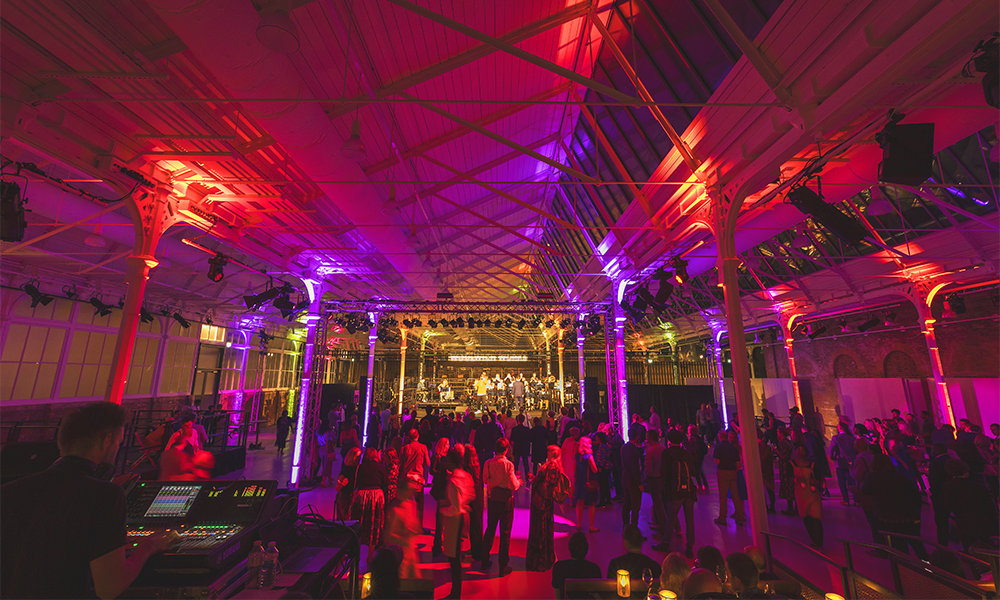
“Underpinning everything we do is that we’re a catalyst for collaboration. The aim is to create an ecosystem and we’re already seeing people working together. Our role at the trust is partly to cultivate that.
“The aim is that the professional, the community and the emerging all come together – whether through work experience, jobs, volunteering or performance opportunities – to help build pathways and open up the arts to everybody. We want to bring those opportunities to people who may be under-represented or who think they can’t access them.”
what’s coming?
“The near future is rooted in the fact that we’re looking at a horizon where things are relatively stable,” said James.
“We’ve never had that before and, next month, the building starts to get really busy. Almost everything gets going in May and stays running.
“We have what was our festive cabaret – The Grotteaux – opening as a springtime show instead and that looks bonkers, fantastic and eclectic.
“Our comedy, music and family programmes will continue throughout, and we’re really looking forward to the whole site being animated at the same time.
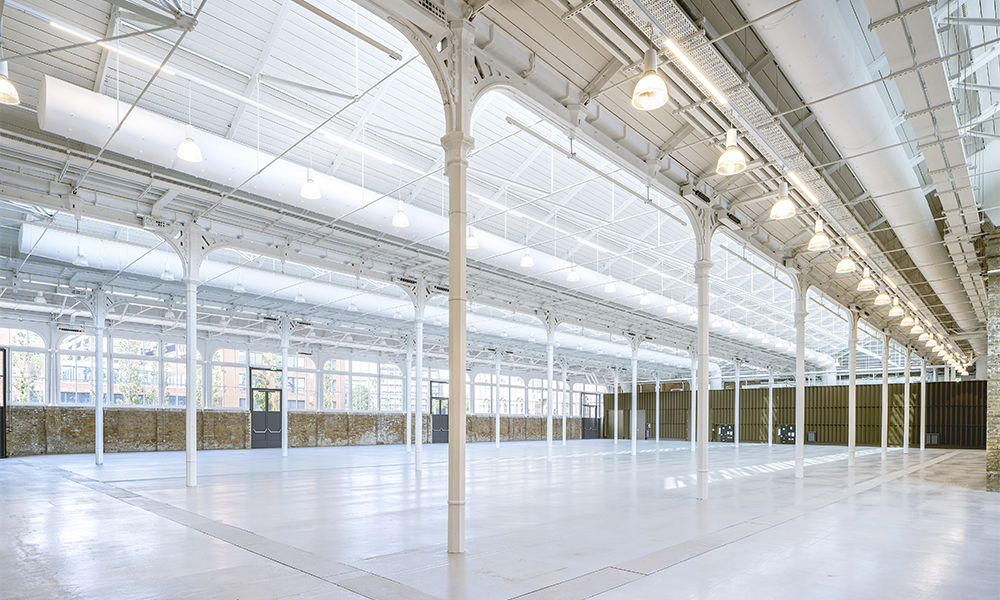
“Then, in July, we’re launching what I’m hoping will become an annual festival here called Woolwich Words And Sounds.
“For that we’ll be programming the whole building with all sorts of different live music, comedy, literature and spoken word performances.
“We’ll have singer Alice Russell and also an amazing jazz saxophonist called Bob Mintzer who’ll be playing some of his big band repertoire with NYJO covering the last 40 years.
“Part of the thing that’s exciting about Woolwich Works is that its layout really lends itself to a festival model – there’s a big area of outdoor space and we want to have some food, drink, deckchairs and free music out there for people to listen to.”
open for business?
“The trust is a true not-for-profit, which means it has to sustain itself and look after the buildings through earned income,” said James.
“That means we do commercial hire for events – dinners, conferences, private celebrations and meetings – all the things you’d expect a big venue to cater for.
“We’ve had a few weddings and, of course, we’d like a few more. But we’re also here for the creative community with lots of rehearsal space available.
“The sector as a whole needs these spaces and the aim is to be available to artistic companies that aren’t based here.
“The idea is that doing this will also contribute to the ecosystem because when we have companies in residence for four or five weeks, inevitably they will meet other, like-minded people in the cafe or around the building.
“Creative people become more creative when they’re in touch with other artists.
“In the end, our success will be seen in the people who have progressed through Woolwich Works and who have gone on to do great things.
“It will be the stories of those people who found their opportunities here and were supported to find their life within the arts.”
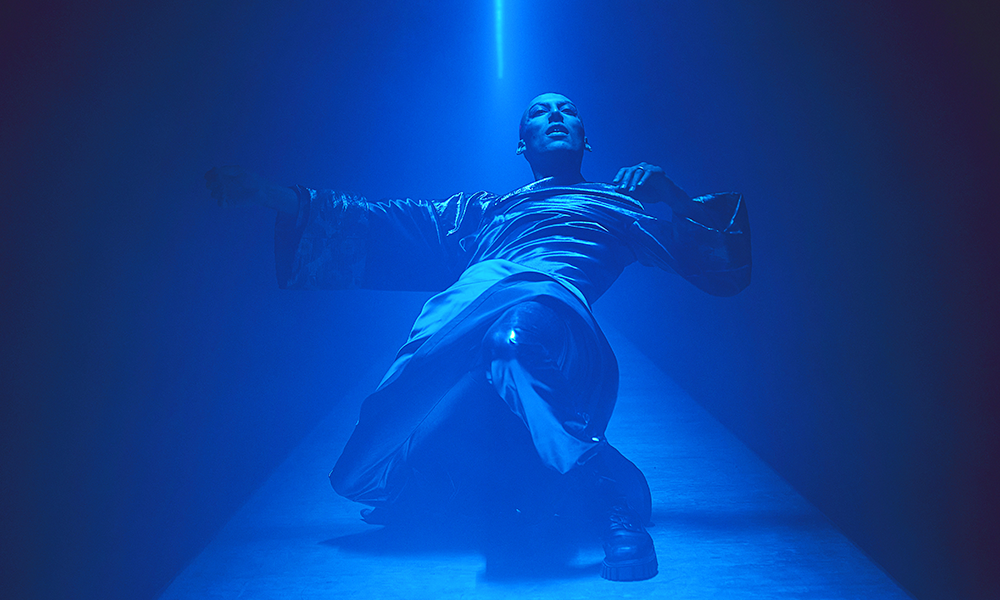
SHOW TIME
The Burnt City, Punchdrunk at Woolwich Works
Immersive theatre company Punchdrunk has opened its show at Woolwich Works, with tickets now booking into December.
The Burnt City transports audiences to the Trojan War with two distinct, detailed worlds to explore packed with mysterious characters to meet.
Troy is reimagined as a dense sci-fi city with an aesthetic inspired by Fritz Lang’s Mertropolis, while Greece is a wasteland filled with jaded soldiers and eerie memories of ancient gods.
Presented as a promenade performance, ticketholders are free to wander these environments at will, interacting with the characters over 100,000sq ft of space
The production is the company’s first show in London since 2014 and its most ambitious to date, reuniting the team behind Sleep No More including original cast members from that show.
Performances last up to three hours, with six arrival times at 10-minute intervals.
Shows on Tuesdays-Fridays start at 6.30pm, Saturdays 1.30pm and 6.30pm and Sundays 4.30pm.
Tickets typically cost £66 with limited “rush tickets” available for £25 for every performance through Time Out.
Read more: Discover Saori weaving at London Craft Week on the Isle Of Dogs



